You’ve got a team to lead, deadlines to hit, and clients to keep happy. You’re spreading yourself too thin yet, somehow, projects go over budget and time estimates are more of a guess than a plan.
Sounds familiar?
These are common time management problems many managers and teams face, so let’s see how to overcome them.

Table of Contents
Red flags that indicate poor time management
Time management issues are costing you big money, making you feel like you’re running in place. And for a project-based company in industries like IT, marketing, or consulting, time is literally money. Every minute of billable work that isn’t captured or gets spent on non-essential tasks is a direct hit to your bottom line.
So, how do you know if you or your team struggles with time management?
Some of the most common indicators include:
- Prone to distractions, constantly jumping from one task to the next without finishing anything, and
- Poor punctuality, with team members consistently late for meetings or missing deadlines altogether.
All this leads to a feeling of always being in a rush and behind schedule.
The constant pressure and disorganization can also manifest in higher levels of stress and burnout within your team.
These are all symptoms of a lack of clear system and focus, proving that something needs to change. If they sound painfully relatable, you’ll want to keep reading.
What are they and how do you overcome time management problems?
Let’s start by looking in the mirror. What are the biggest difficulties in time management for you as a manager? What time management problems have you noticed within your team?
Chances are you’ll find them all below.
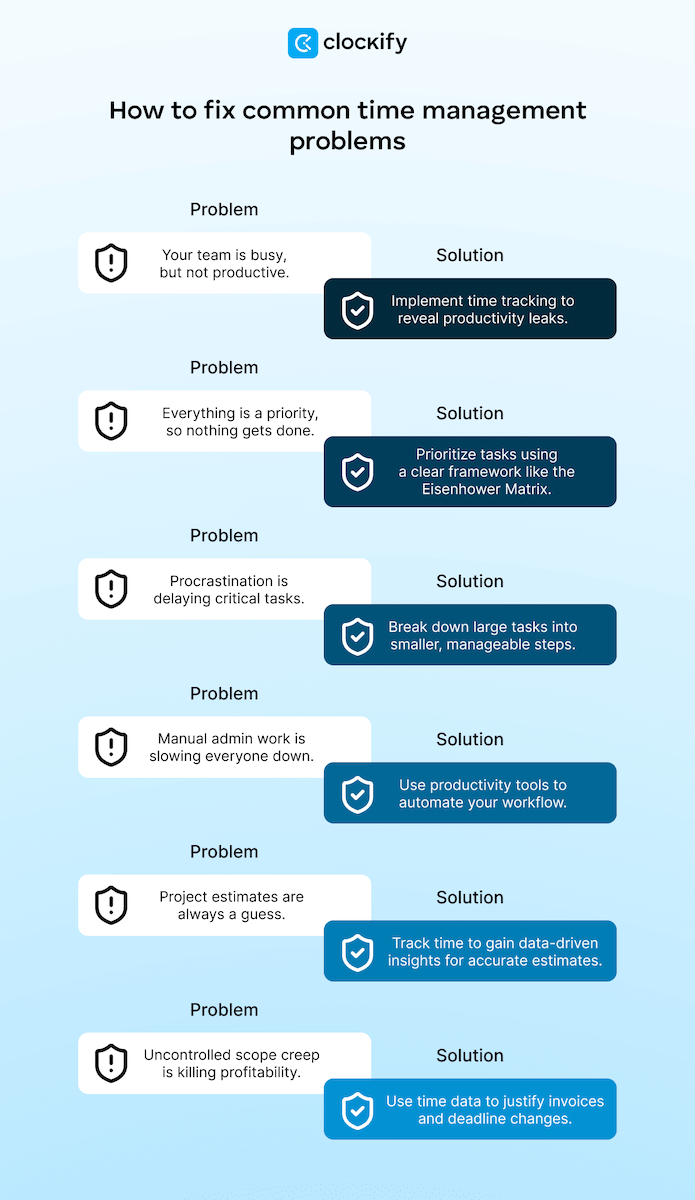
Problem #1: Your team is busy, but not productive
You see your team in meetings, sending emails, and tackling tasks. They’re definitely busy. But are they productive? Often, the answer is no. A lot of time is spent on low value tasks, distractions, or getting pulled into pointless conversations.
This is one of the biggest time management barriers — hours get wasted while the focus on important tasks is lacking. As a result, projects fall behind and your client relationships might suffer.
The root cause: A lack of clarity on what’s most important and an environment that allows for frequent distractions.
Keynote speaker and author, Jones Loflin, highlighted 3 different sources of distraction as a big time management issue, namely:
- Internal noise (self-doubt, too many thoughts),
- External environment that draws away attention, and
- Expectations of other people (being too accessible to others).
💡 CLOCKIFY PRO TIP
Can you believe that just eating healthily boosts productivity by 34%? Learn more interesting productivity statistics here:
How to fix your team being busy but unproductive
To counter the distractions he pointed out, our expert interlocutor Jones Loflin suggests mentally preparing to focus on the task and being clear about your outcomes:

“Have you taken a moment to capture the ‘open loops’ in your mind so they don’t distract you? Secondly, get into a physical environment where you can work effectively.”
Finally, Jones suggests giving yourself permission to be unavailable to others for a while so you can complete your tasks.
To understand whether your team is productive or just busy, you need to know where their time’s going. And this includes everything from meetings and emails to minor tasks — not just the projects.
So, start by implementing time tracking and then proceed to review and adjust:
- Use a time tracking software like Clockify to get a clear picture of how time’s being allocated. This is where you should focus strictly on data and avoid micromanagement. The data will show you what’s working and what isn’t, and reveal the hidden time sinks.
- Review the data with your team. Identify the time management barriers that are hurting productivity — maybe it’s too many meetings, a lack of clear direction, or maybe it’s too much time spent on social media. Clockify’s auto tracker automatically records the time across visited websites and apps. This can help you pinpoint potential productivity leaks.
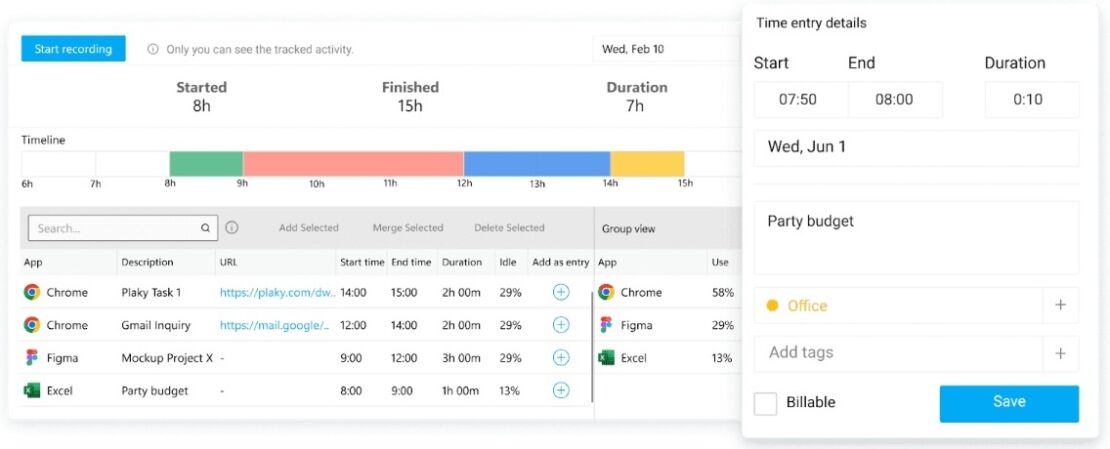
Use these insights to make a new work plan and adjust it as necessary.
Problem #2: No way to determine what’s a priority
Connected to the issue of busy vs productive is another one of very common time management problems — the matter of prioritization.
Take a look at your to-do list. If it’s filled with everything from “reply to that email” to “write the project proposal,” it’s time to prioritize. When you treat every task as equal, then it all feels urgent even when it’s not.
Your team follows your lead. As we mentioned previously, they’re busy too, but, in the end, they don’t actually spend a lot of time on the important tasks that matter to the project’s bottom line. This results in all of you feeling constantly overwhelmed.
The root cause: Treating every task, big or small, as equally urgent.
Sort out priorities with Clockify
How to fix not knowing your priorities
The solution lies in being ruthless with your priorities — not working more hours. It’s necessary to build a framework that tells you what to work on and when.
Instead of just focusing on what’s urgent, start considering what’s important, too. The so-called Eisenhower Matrix is a good prioritization method to use as it helps you separate tasks into 4 distinct groups:
- Urgent and important — tasks that you must do now,
- Important but not urgent — tasks that you should schedule time for,
- Urgent but not important — tasks that you should delegate, and
- Neither urgent nor important — tasks you should delete from your to-do list as they fall under busy work and time sinks.
Global leadership expert, Jimmy Burroughes, helped many teams through priority challenges using 3 core areas that made it easier to determine where to put time and energy.
According to Jimmy, the results of this framework have increased leader capability by 40-65% and greatly reduced burnout levels:

“The process centres around the underlying Purpose — why this work is being done and why I need to be involved, the Value of the work’s impact and how that compares to other things and most importantly, if I have the Capacity to do it and if not, what will be traded?”
Problem #3: Procrastination causes the delay of critical tasks
Do you find yourself avoiding that big, complex task, even though it may be crucial for the project to move forward? It’s staring at you in all of its importance from your to-do list, yet somehow, every time you look at it, you find a bunch of other things to do.
You may have organized your tasks by importance and urgency, but when it comes to this really big and complicated one, you suddenly want to:
- Answer every single email in your inbox,
- Reorganize your desktop, or even
- Start on next week’s report.
This is procrastination — you and your team get caught in a cycle of avoidance and it’s costing you valuable time and money.
The root cause: Feeling overwhelmed by the task’s complexity.
How to fix procrastination
Break it down. Remove the focus from how big and how complex this one task is by turning it into several, more manageable tasks.
For example, instead of putting “write the project proposal” on your to-do list, add several smaller items like:
- “Create proposal outline,”
- “Draft the introduction,”
- “Gather data for the budget section,” and so on.
This will give you a clear starting point and make the work feel less overwhelming.
Consider the “Eat the frog” technique as well — simply start your day with the hardest, most important task. When you combine it with the previous strategy, you can successfully deal with procrastination. And it gives you a sense of accomplishment, which builds momentum for the rest of your day.
💡 CLOCKIFY PRO TIP
Did you know that the average person spends 6 and a half hours online every day? Check out plenty similar time management statistics here:
Problem #4: Administrative work is inefficient
Even though it may not be considered high value, administrative work can’t be skipped. But if it’s not managed well, it can easily cause difficulties in time management.
Take a good look at your administrative workflow. Do you still use spreadsheets for project tracking, resource allocation, and billing? It’s a manual and tedious process that’s prone to errors and missed information.
As a result, you’re bound to spend a lot of time copying and pasting, trying to make sense of different documents — and still hope you haven’t made a mistake before sending a client invoice.
The root cause: Relying on manual processes and outdated tools instead of dedicated software.
💡 CLOCKIFY PRO TIP
Pen and paper feel familiar and there are many benefits of writing by hand — but that’s NOT the case when it comes to business and admin work:
How to fix admin work
Manual work is slow and expensive. That said, investing in the right productivity tools is the smartest decision you can make for your business.
Start with digital time tracking and billing. For example, use powerful software like Clockify that lets you and your team track time with a timer, log work in a timesheet, or clock in with a kiosk. This turns into data that you can then use to:
- Estimate future projects accurately,
- Generate, send, and justify invoices to clients automatically,
- Gain clear insights into project profitability, and more.
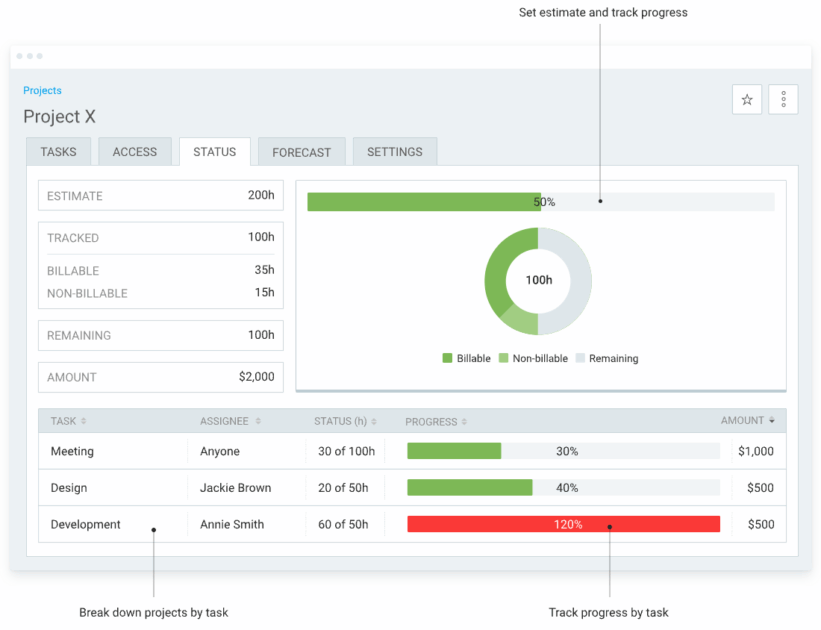
Continue to improve your project management with a centralized digital place to organize all your projects and tasks. For example, a project management tool like Plaky lets you:
- Create visual task boards,
- Assign responsibilities,
- Track progress, and much more.
This gives everyone a clear view of what needs to be done and who’s doing it, so you can prevent miscommunication and missed deadlines.
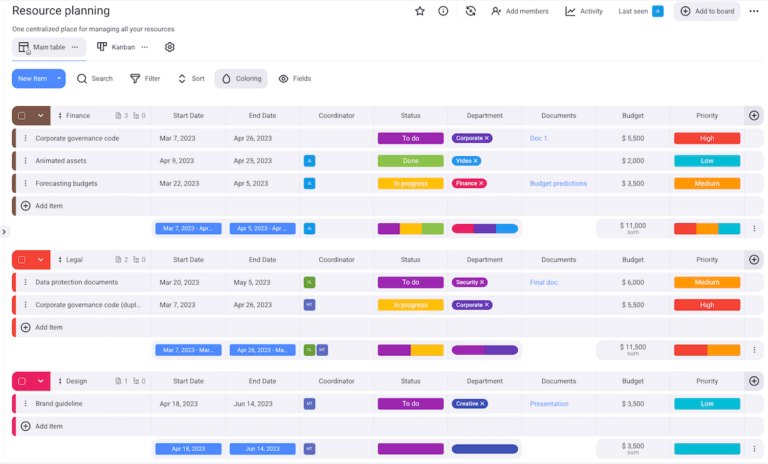
You can go a step further in overcoming time management challenges with a collaboration tool like Pumble. After all, your team needs to communicate without getting lost in email chains. Pumble helps you:
- Organize conversations by project or topic,
- Share files and discuss ideas,
- Keep all communication in one place, etc.
It’s a great way to cut down on unnecessary meetings and improve team focus.
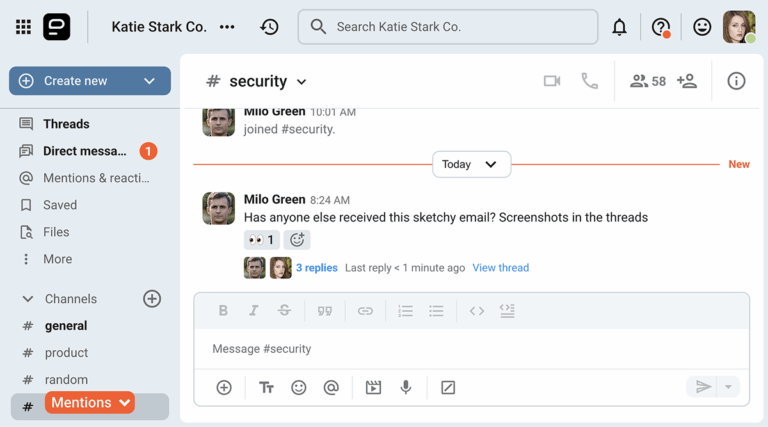
Problem #5: Guessing leads to poor time and budget estimates
“How long will this take?”
Every client asks this question. But what’s your answer?
Without accurate historical data or a reliable way to track time spent on similar projects, your estimates are just a guess. The guessing game is also one of the common time management issues that could cause:
- Projects going over budget and deadlines,
- Clients getting frustrated, and
- Your profit margins shrinking.
The root cause: A lack of data from past projects and no system to track tasks in real time.
💡 CLOCKIFY PRO TIP
Check out this article for some great tips on how to improve the precision of your work time estimations:
How to fix guesswork
When you combine time management with business insights, you get both accountability and profitability. Time tracking data is a goldmine of insights.
With simple software like Clockify, you can generate reports that show you which projects and clients are the most profitable. This helps you make smarter strategic decisions about the kind of work you take on in the future.
And once you have a history of time tracking data, you can look back at similar projects to create more accurate estimates for new ones: You move from guesswork to a data-driven approach. This is how you protect your profit margins and build trust with your clients.
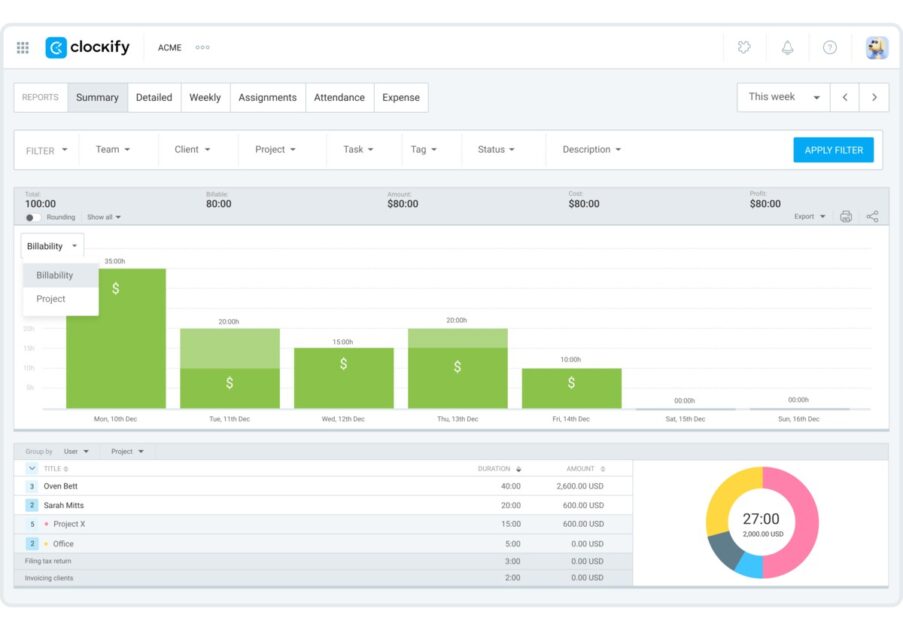
💡 CLOCKIFY PRO TIP
To get the benefits of time tracking, your employees also need to understand its usefulness and purpose:
Problem #6: Uncontrolled project scopes and lost revenue
A client asks for a small change. Then another. And another. Before you know it, the project scope has ballooned, but the timeline and budget haven’t.
You’ve just added scope creep to the pile of time management challenges.
Without a clear record of every single minute that goes into these new requests, you have no way to justify a larger invoice or deadline change. And you end up doing extra work for free.
The root cause: A lack of clear, defensible data to present to clients when the scope changes.
Try Clockify for easy invoicing
How to fix project scopes and lost revenue
Scope creep will kill your profitability if you let it. The best way to fight it is with a clear and objective record of every hour worked.
When a client asks for a new feature or a change, have your team track the time they spend on that specific request.
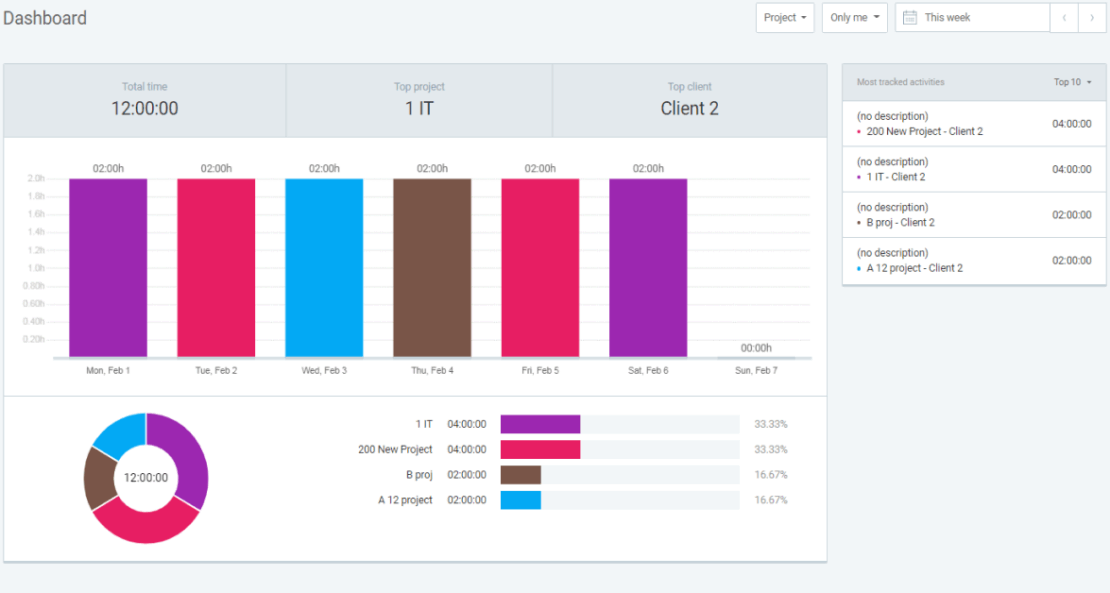
Once the work is done, you can generate a report that clearly shows the original project scope compared to the additional work on new requests. This provides concrete evidence that you can present to the client. There’s no arguing with data.
FAQs about time management
For more info on time management and related challenges, check out the following section.
Why do I struggle to manage my time?
The most common root cause of poor time management isn’t laziness or lack of desire, but a lack of system. In other words, you can’t organize something that isn’t defined. If your tasks aren’t broken down, prioritized, and assigned, you’re just reacting to whatever comes at you.
This is a recipe for feeling overwhelmed and losing a sense of accomplishment.
What are the 5 key elements of time management?
Here are 5 critical elements necessary to strengthen your grasp on good time management.
#1: Organization — create a structured environment, both physically and digitally. Manage your workspace, files, and calendar so you can find what you need quickly instead of wasting valuable time searching.
#2: Prioritization — identify your most important tasks and focus on them first. Try out different (re-)prioritization techniques to find what works best for you and your team. This will ensure you’re always working on what truly matters to your project’s success and profitability.
#3: Goal setting — effective time management starts with setting SMART goals that are specific, measurable, attainable, relevant, and time-bound. This provides a clear purpose for your efforts.
#4: Planning — map out your day, week, and project timelines based on your priorities and goals. Break down large projects into manageable tasks and schedule time blocks for focused work. It’s how you stay on track.
#5: Delegation — assign tasks to the right people on your team. Managers can’t do everything by themselves. By delegating, you’ll free up your time for strategic work and improve overall team productivity.
💡 CLOCKIFY PRO TIP
Playing games is fun but when you play time management games you also get to enjoy added real-life benefits to your own skills:
What is the 7-8-9 rule for time management?
The 7-8-9 rule is a simple way to create a work-life balance. It suggests you should aim for:
- 7 hours of quality sleep,
- 8 hours of productive work, and
- 9 hours of personal time.
The 7-8-9 rule can be a great way to remember to take a break if you feel like all you do is work.
Is time management an issue with ADHD?
Yes. Time management can be a huge issue for people with ADHD. It’s often related to a concept called “time blindness” or “time collapse,” where a person has a distorted or inconsistent perception of time.
This has nothing to do with being lazy. It’s a neurological difference that makes it difficult to track time, plan for the future, and remember to do the tasks that aren’t in front of you.
For a project manager with ADHD, this can feel like a constant struggle. There’s really no point in pushing yourself to “just try harder.” The best course of action is to build an external system that can compensate for the internal challenges. That said, you could benefit from:
- Task boards or digital calendars that visually represent time and task, and
- Automation tools that let you set reminders so you don’t have to rely on your memory.
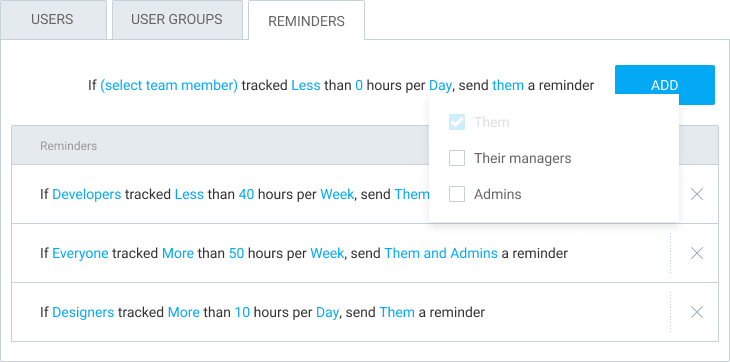
Stop fighting how your brain works and adopt a structure that supports it instead.
💡 CLOCKIFY PRO TIP
To successfully overcome motivation problems and incorporate ADHD productivity tips into your routine, check out this article:
What is ADHD burnout?
Someone with ADHD who constantly struggles to meet daily demands may end up in a state of severe exhaustion, known as ADHD burnout.
It’s tied to time management because the primary cause is the immense mental effort required to manage a world that isn’t built for a neurodivergent brain.
This constant struggle with executive functions like planning, organizing, and prioritizing is a major time management problem that leads to burnout.
Guesswork is ruining your business — stop it with Clockify
Your business is a series of projects and your business success depends on how well you manage them.
The time management problems we’ve talked about are all symptoms of one core issue — a lack of clear, actionable data. You can’t fix what you can’t see.
It’s time to stop guessing and start gaining — control, insight, and profitability.
That’s where Clockify comes in. More than just a time tracker, Clockify acts as the central nervous system for your projects, giving you the ability to turn every minute into a strategic asset.
To recap what we’ve discussed above, here’s how to put Clockify to work for you:
- To estimate accurately, use Clockify to create a historical record of time spent, thus protecting profit margins and building client trust.
- To fight scope creep, track new requests under a separate tag, giving you the data to justify changed orders and larger invoices.
- To streamline admin work, let Clockify automatically turn tracked time into accurate timesheets and invoices, freeing you from manual spreadsheet work.
You can also explore our Marketplace for available add-ons to further tailor the software experience to your business needs. All available add-ons by CAKE.com are free and you’re also welcome to develop your own.
For example, Insights add-on lets you create both informative and a visually appealing dashboard from whatever workspace data you want.
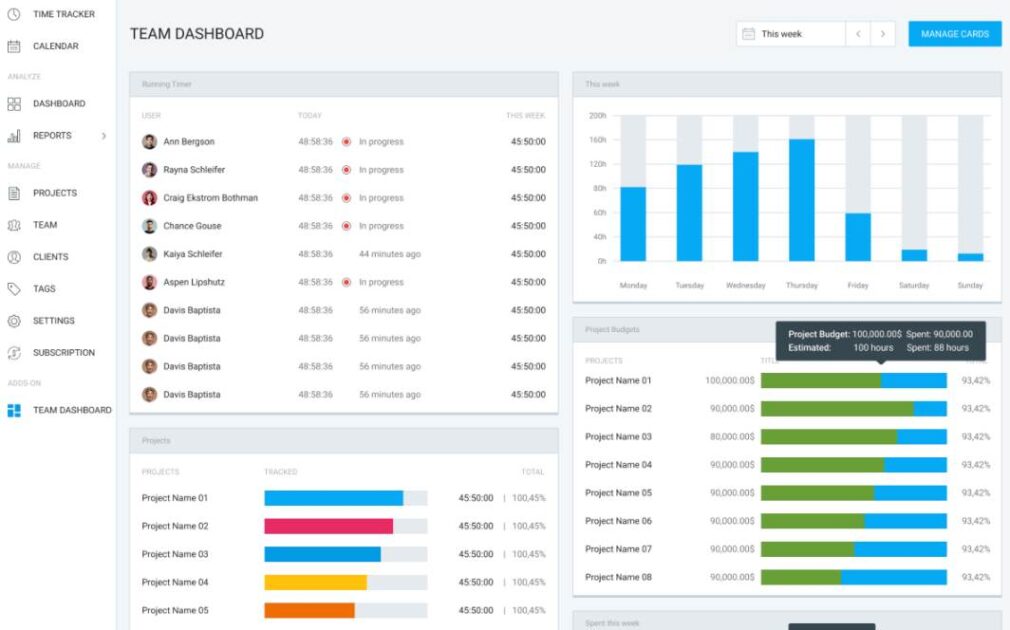
Use Clockify to track time and gain the data you need to make smarter business decisions. Move from a state of reactive grinding to proactive data-driven management. And finally, have a life outside of spreadsheets.




